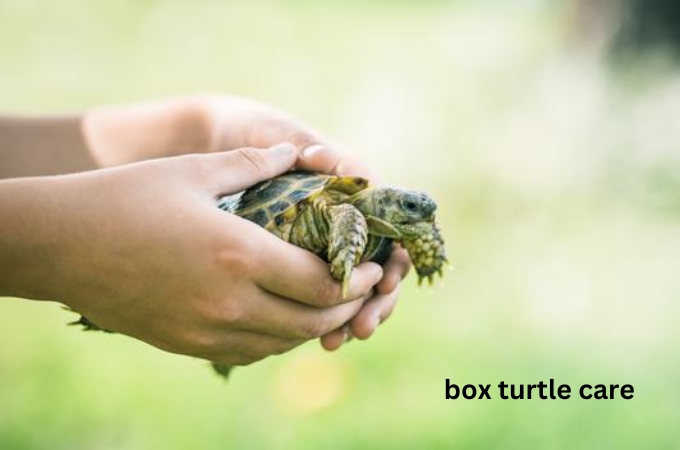Are Box Turtles Endangered? Exploring Their Conservation Status
Are box turtles endangered? The answer to this question is crucial for understanding the current state of these fascinating creatures. Box turtles, known for their unique ability to retract their head, limbs, and tail into their sturdy shell, are indeed facing significant threats to their survival. Human activities such as habitat destruction, pollution, and illegal wildlife trade have taken a toll on their populations. In this article, we will explore the challenges that box turtles encounter in their struggle for survival and the efforts being made to protect and conserve these incredible reptiles. Let’s delve into the world of box turtles and discover what we can do to ensure their future.
Are Box Turtles Endangered?
Box turtles are fascinating creatures that have captured the interest and curiosity of many nature enthusiasts. These charismatic reptiles are known for their box-like shell, which provides them with a unique defense mechanism against predators. However, in recent years, concerns have been raised about the conservation status of box turtles. In this article, we will delve into the question, “Are box turtles endangered?” and explore various aspects related to their population, threats, conservation efforts, and more.
1. The Decline of Box Turtles
Box turtles were once widespread across North America, but over time, their populations have faced significant declines. Understanding the factors contributing to this decline is crucial in determining the current status of box turtles.
1.1 Habitat Loss
Habitat loss is one of the primary concerns affecting box turtles. The destruction and fragmentation of their natural habitats due to urbanization and agricultural activities have severely impacted their ability to find suitable places to live, reproduce, and find food.
1.2 Road Mortality
Box turtles often fall victim to road mortality, as they frequently wander onto roads in search of food or mates. Their slow movement and the increasing number of vehicles on roadways make them vulnerable to fatal collisions, further endangering their populations.
1.3 Collection for Pet Trade
Box turtles have also been significantly impacted by the illegal collection for the pet trade. While there are legal regulations in place regarding their collection and trade, enforcement can be challenging, leading to overexploitation and disturbance to wild populations.
2. The Threats to Box Turtles
To better understand the endangerment of box turtles, it is essential to examine the various threats they face, both natural and human-induced.
2.1 Predation
Predation plays a significant role in the decline of box turtle populations. Eggs and hatchlings are particularly vulnerable to predators such as raccoons, skunks, and snakes. Additionally, adult box turtles face predation from larger mammals and birds.
2.2 Disease and Parasites
Box turtles are susceptible to various diseases and parasites, which can impact their overall health and survival. Respiratory infections, shell diseases, and internal parasites are among the common health issues affecting box turtles.
2.3 Climate Change
Climate change poses another significant threat to box turtles. Rising temperatures, altered precipitation patterns, and habitat shifts can disrupt their natural breeding cycles, limit food availability, and reduce suitable habitats.
3. Conservation Efforts
Recognizing the importance of protecting box turtles and conserving their populations, numerous organizations, researchers, and enthusiasts have actively engaged in conservation efforts.
3.1 Habitat Restoration
Restoring and conserving natural habitats is crucial for the survival of box turtles. Efforts are underway to preserve and restore their preferred habitats to ensure the availability of suitable environments for feeding, nesting, and overwintering.
3.2 Conservation Education
Conservation education plays a vital role in raising awareness about the plight of box turtles. By educating the public about the importance of these reptiles and their habitats, individuals can take action to support conservation efforts and make informed decisions regarding wildlife interactions.
3.3 Wildlife Rehabilitation
Wildlife rehabilitation centers play a vital role in rescuing injured or sick box turtles, providing necessary medical treatment, and releasing them back into suitable habitats. These efforts help enhance the survival chances of affected individuals.
4. Research and Monitoring
To effectively conserve box turtles, ongoing research and monitoring are essential. Understanding their population dynamics, movement patterns, genetics, and health status can guide conservation strategies and aid in the development of effective management plans.
4.1 Population Surveys
Researchers conduct population surveys to assess the abundance, distribution, and demographic characteristics of box turtles in different regions. These surveys provide valuable insights into population trends and help identify areas where conservation efforts should be intensified.
4.2 Tracking and Telemetry
Tracking individual box turtles using telemetry techniques allows researchers to gather data on their movement patterns, home range, and habitat preferences. This information aids in identifying critical habitats and understanding how turtles respond to environmental changes.
4.3 Genetic Studies
Genetic studies help determine the genetic diversity and connectivity of box turtle populations. This knowledge is crucial for evaluating the impacts of habitat fragmentation and guiding conservation actions to maintain healthy gene pools.
5. Legal Protection
To safeguard box turtles and their habitats, legal protection is of utmost importance. Various laws and regulations have been established to conserve these reptiles and prevent their exploitation.
5.1 State and Federal Regulations
Many states have designated box turtles as protected species, imposing restrictions on collection, possession, and trade. Additionally, federal regulations such as the Endangered Species Act provide further protection for certain subspecies that are at greater risk.
5.2 International Agreements
International agreements, such as the Convention on International Trade in Endangered Species of Wild Fauna and Flora (CITES), regulate the cross-border trade of box turtles to prevent illegal trafficking and ensure sustainable practices.
6. Citizen Science and Community Involvement
Engaging communities and fostering citizen science initiatives can greatly contribute to box turtle conservation efforts.
6.1 Citizen Science Projects
Citizen science projects encourage individuals to contribute to ongoing research and monitoring efforts. By collecting data on box turtle sightings, behavior, and health, volunteers can provide valuable information that aids in conservation decision-making.
6.2 Habitat Stewardship
Encouraging landowners and communities to engage in habitat stewardship practices, such as protecting and creating suitable habitats, can create a network of safe spaces for box turtles.
In conclusion, box turtles are indeed facing various threats that have led to population declines across their natural range. However, through concerted efforts in habitat restoration, conservation education, wildlife rehabilitation, research, legal protection, and community involvement, there is hope for the long-term survival of these remarkable reptiles. By understanding the challenges they face and taking proactive measures, we can contribute to the conservation of box turtles and ensure their place in our ecosystems for generations to come.
Frequently Asked Questions
Are box turtles endangered?
Box turtles are indeed at risk of becoming endangered. Due to habitat loss, pollution, and the pet trade, their populations have been declining. Additionally, box turtles face threats from road mortality and predation. It is important to implement conservation measures, protect their habitats, and educate the public to ensure the survival of box turtles in the wild.
What factors contribute to the declining box turtle populations?
The declining populations of box turtles can be attributed to several factors. Habitat loss due to urbanization and agriculture is a major threat. Pollution, such as water contamination and pesticides, also harms their habitats. Furthermore, illegal collection for the pet trade and the high mortality rate from encounters with vehicles and predators contribute to the decline in box turtle populations.
How important is conservation for box turtles?
Conservation efforts are vital for the survival of box turtles. These turtles play a crucial role in maintaining ecosystem balance by controlling populations of small invertebrates and dispersing seeds. Protecting their habitats and implementing measures to mitigate threats like pollution and illegal collection are essential for ensuring the long-term survival of box turtles.
What can be done to protect box turtles and their habitats?
To protect box turtles and their habitats, it is important to establish protected areas or reserves where they can thrive. Encouraging responsible land management practices, such as preserving forested areas and maintaining clean water sources, is crucial. Educating the public about the importance of conserving box turtles and their habitats can also help reduce road mortality and illegal collection.
Can individuals help conserve box turtles?
Yes, individuals can contribute to box turtle conservation efforts. One way is by creating suitable habitats for box turtles on their own properties. This can include providing shelter, water sources, and native plants that attract their natural prey. Additionally, reporting any box turtle sightings to local conservation organizations can help researchers monitor their populations and make informed conservation plans.
Final Thoughts
Box turtles are indeed facing a concerning situation in terms of their population and habitat. The various threats they encounter, such as habitat loss, pollution, and illegal pet trade, are significantly impacting their numbers. Efforts should be made to conserve and protect these amazing reptiles to prevent further decline. Implementing measures such as habitat preservation, raising public awareness, and strict enforcement of laws against the illegal trade of box turtles is crucial. By taking action now, we can ensure a brighter future for box turtles and their continued existence in our ecosystems. Overall, it is evident that box turtles are endangered and require immediate attention for their conservation.

